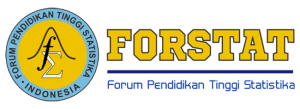Development of Application Providing Public’s Perspectives on Official Statistical Indicators
DOI:
https://doi.org/10.34123/jurnalasks.v14i1.391Abstract
BPS-Statistics Indonesia, as an official data producer, puts data quality as a top priority. Public acceptance and trust in data reflect data reliability which is one of the data quality indicators. The existing survey that collects user acceptance, trust, and perspective to data produced by BPS can only reach data users in a limited number. Perspectives from a large number of data users cannot be captured. This research aims to build an application that collects and provides users’ perspectives and sentiment to official statistics sourced from online news. One feature in this application is Named Entity Recognition, which extracts public perspectives in entities such as names, organizations, statistical indicators, quotes or opinions, etc. This application objectively measures the sentiment of news discussing or citing statistical indicators. This application also facilitates BPS to do social network analysis to understand the relationships between fellow data users for each statistical indicator. The implicit goal is to effectively provide insights into how frequently society uses and refers to statistical indicators produced by BPS in any domain and their perspective on data. All models and features provided in this application have been evaluated based on standard performance metrics.
Downloads
References
[2] Nurdiansyah, Yanuar, Saiful Bukhori, and Rahmad Hidayat 2018 Sentiment Analysis System for Movie Review in Bahasa Indonesia Using Naive Bayes Classifier Method Journal of Physic: Conference Series
[3] Clifton, Allan and Gregory D. Webster 2017 An Introduction to Social Network Analysis for Personality and Social Psychologists Social Psychological and Personality Science pp 1-12
[4] Shazna, Ashiyanth and Aminath Musfiqa Ibrahim 2019 Review of the National Statistical System in the Maldives Asia-Pacific Economic Statistics Weeks
[5] Yajing, Cong 2017 Big Data for Official Statistics: Experience from China Asia-Pacific Economic Statistics Week.
[6] Mariyah, Siti 2014 Identification of Big Data Opportunities and Challenges in Statistics Indonesia In Proceedings of ICSS Conference
[7] Honnibal, Matthew SpaCy - Industrial-strength Natural Language Processing in Python https://spacy.io/ (Accessed March 2019)
[8] Choi, Jinho D., Joel Tetreault, and Amanda Stent 2015 It Depends: Dependency Parser Comparison Using A Web-based Evaluation Tool In Proceedings of the 53rd Annual Meeting of the Association for Computational Linguistics and the 7th International Joint Conference on Natural Language Processing pp 387–396.
[9] Honnibal, Matthew and Mark Johnson 2015 An Improved Non-monotomic Transition System for Dependency Parsing In Proceedings of the 2015 Conference on Empirical Methods in Natural Language Processing pp 1373–1378
[10] Cunningham, et al 2013 Getting More Out of Biomedical Documents with GATE's Full Lifecycle Open Source Text Analytics PLoS Computational Biology
[11] Sianipar, Raisa and Erwin Budi Setiawan 2015 Pendeteksi Kekuatan Sentimen pada Teks Tweet Berbahasan Indonesia Menggunakan SentiStrength In e-Proceeding of Engineering Vol. 2, No.3
[12] CyberEmotion SentiStrength http://sentistrength.wlv.ac.uk/ (Accessed March 2019)
[13] Raschka, Sebastian 2018 Model Evaluation, Model Selection, and Algorithm Selection in Machine Learning
















